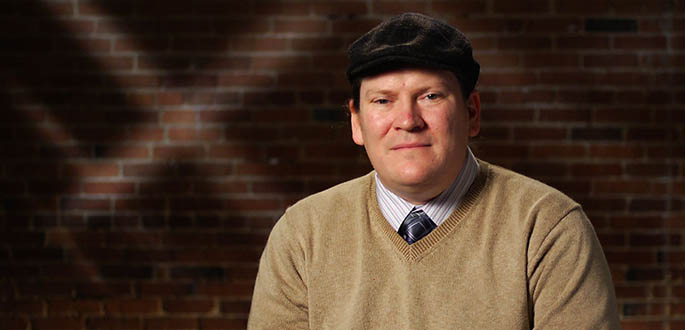Faculty Profile: Meet Christopher Rolinson, Associate Professor of Photojournalism Tuesday, July 22, 2014

Christopher Rolinson studied Film and Digital Technology at Chatham University, Journalism and Mass Communication at Point Park University and Art at Slippery Rock University - earning a Master of Fine Arts, Master of Arts and Bachelor of Arts. At Point Park, Rolinson has introduced new courses, collaborations and partnerships to expand and diversify the photography and photojournalism programs.
Tell us about your professional background.
I've worked at a daily newspaper, done freelance work for wire services, produced multimedia for the New York Times - it's very broad. I feel like I'm a jack-of-all-trades when it comes to lens-based multimedia.
When I first started out as a news photojournalist I witnessed the transition from film to digital, and that was the first step in my professional process. Learning the analog methods of picture taking and transitioning that into digital was a great practical experience for me. As things have evolved, I've been required to learn more multimedia, to learn more about video and to incorporate motion into my teaching. As a practicing professional, I've educated myself in these methods, and employed and practiced them in a professional way to make sure that I'm teaching my students what they need to know get work in the field.
How do you incorporate your real-world experience into your classroom?
When I work professionally I have my own workflow and my own methodology, and I try to teach that to students so that they have an understanding of how to move a project from start to finish. I give them the freedom to develop their own work ethic and style. I use what I've done in the field as an example and a place for them to start, so when they are creating media they have a frame of reference they can apply to their own work.
What courses do you teach?
- Photojournalism
- Documentary Photography
- Introduction to Digital Photography
- Studio Photography
- Specialized Photography
What types of hands-on opportunities do students have in your classes?
In photojournalism classes my students have to produce multimedia. So basically that means they have to choose their own story, present it to the class as a pitch/idea and then see that project through to the end. This multimedia piece is a way to show a potential employer a complete set of their skills when it's time to apply for a job.
What inspires you the most in your classroom?
When my students have the aha moment and they see the results of their work improve.
What message do you try to convey to your students?
This is a highly competitive business. People come and go all the time, so you have to remain relevant, understand practical skills, be a self-starter, network and have a work ethic that will allow you to stay competitive. Communicate well with others, be friendly and build work relationships.
More About: photography, photojournalism, faculty

